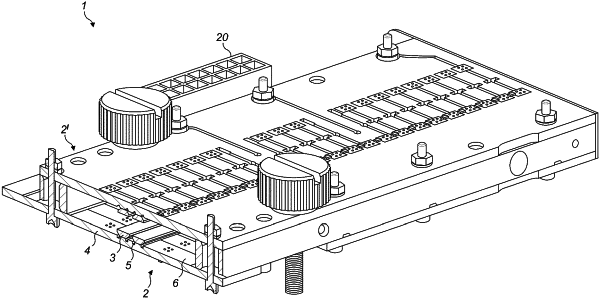| CPC H01J 49/063 (2013.01) [H01J 49/0045 (2013.01); H01J 49/068 (2013.01); H01J 49/4215 (2013.01); H01J 49/4225 (2013.01)] | 20 Claims |

|
1. An electrode arrangement for an ion trap, ion filter, an ion guide, a reaction cell or an ion analyser, the electrode arrangement comprising:
an RF electrode mechanically coupled to a dielectric material; and
at least one DC electrode located between the dielectric material and the RF electrode;
wherein the RF electrode is mechanically coupled to the dielectric material by a plurality of separators that are spaced apart and configured to define a gap between the RF electrode and the dielectric material and wherein each of the plurality of separators comprises a projecting portion and the dielectric material comprises corresponding receiving portions such that on coupling of the RF electrode to the dielectric material, the projecting portion of each separator is received within the corresponding receiving portion of the dielectric material;
wherein the RF electrode has a surface opposing the dielectric material;
wherein the DC electrode extends across the dielectric material such that at least a part of the DC electrode lies directly between the surface of the RF electrode and the dielectric material; and
wherein the proportion of the surface area of the surface of the RF electrode which is shielded from the dielectric material by the DC electrode is at least 50%.
|